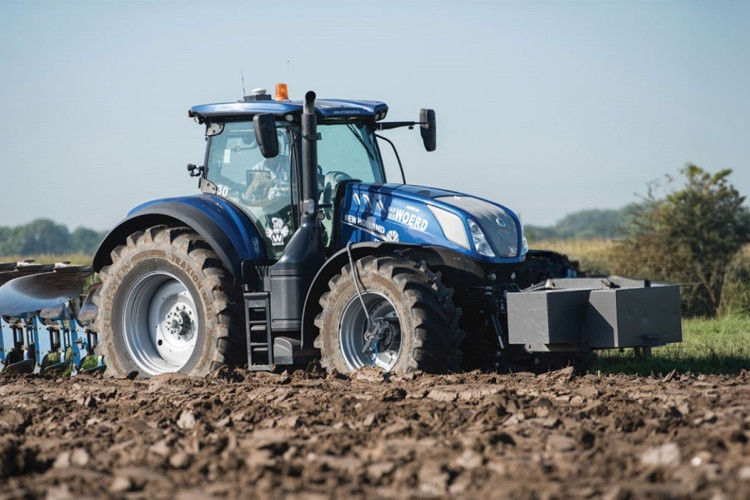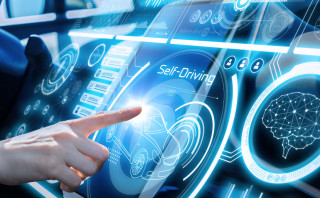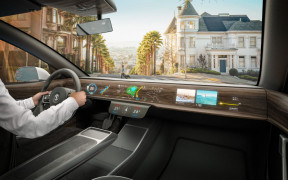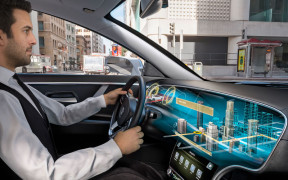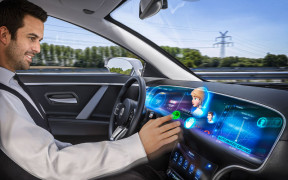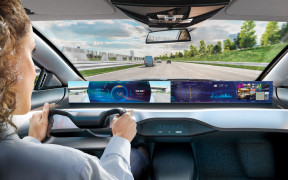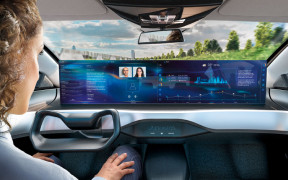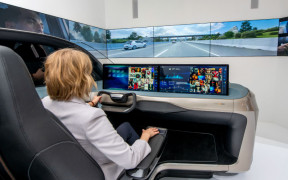The digitisation of vehicle dashboards
The car dashboard is changing. It happened slowly and all at once, that kind of creeping yet overnight change you don’t really notice until it’s made unavoidable when a manufacturer sticks what looks like a supersized smartphone in the dash. That said, the first fully digital display debuted back in the 70’s so it shouldn’t be a huge surprise.
But we’re getting ahead of ourselves. Let’s rewind quickly before accelerating forward again to see what the future holds for the humble vehicle dashboard. Because it ain’t going to be humble much longer.
A quick look at dashboard history
Back when your speed was limited by how fast the horses galloped in front of your stagecoach, there was a mud problem. The faster the horses went, the more mud they kicked up. Or to use the proper terminology, mud would be ‘dashed’ up. One can only imagine it would be rather ruinous for your clothed refinery to be subjected to such an onslaught of muck. The answer was to place a board between the folk in the front of the wagon and the horses. This became known as a ‘dashboard’.
When the Model T was launched in 1908, the display board in front of the driver had to be called something. So, Ford figured that even though there were no longer any horses dashing up mud, the name dashboard was decent enough to stick with. Back then, the dashboard contained a single instrument, an ammeter to measure the current of the electric circuitry. As an optional extra, you could choose to add a speedometer. If you did so, it would tell you how fast you accelerated to the top speed of 45mph. To be fair, that was probably scarily fast for folk used to a horse-powered top speed of around 15 mph.
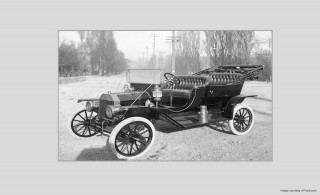
Over the next few decades more dials were added and there was a standard assortment one came to expect. The speedometer became essential and someone figured a fuel level indicator would prove handy. Depending on the vehicle, these might be joined by an oil pressure gauge and mileage counter.
As motor cars developed and had added functionality, some of them required a visual representation on the dashboard. So there were warning lights added for your seatbelts not being fastened, lights for hand brakes being left on and lights for low water, overheating...and the dreaded engine block light. This signified the impending draining of your bank account for some unspecified mechanical repairs you knew were now required in order to get the warning light turned off.
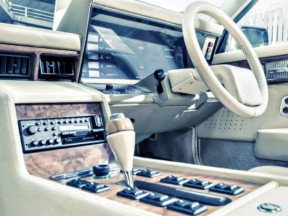
The world witnessed the first fully digital dashboard in 1976. The Aston Martin Lagonda was way ahead of its time. It was also a bit rubbish. Although to be fair to Aston Martin, they were trying to cram technology into a dashboard that didn’t really exist. Except in the form of the computer from a Pac Man video game, which is what they were actually using. It did look pretty slick but, rather than herald the start of digitisation, it was ignored by the masses and other manufacturers.
There were other skirmishes with digitisation over the years but they were essentially gimmicks, amounting to little more than an attempt to differentiate and appear stylish. In the 1980’s, when Casio calculator watches were being worn on everyone’s wrist, crafting a digital display to look like something out of Knight Rider became fashionable. Probably the most stunning example was the Mk2 Vauxhall Astra GTE (1984). It was a masterpiece of 80’s styling. But that’s exactly what it was...a fashion trend particular to a time and place. Come the 90’s, the digital dash had pretty much done its dash. We went back to analogue dials and the traditional dashboard.
Dashboards today
So what’s changed since the 80’s and what do we have today? Well, what changed was some chap by the name of Steve decided to unleash this weird new communications device. That was in June 2007, the device was an iPhone and the world has never been the same since. At the same time, the internet progressed from something you only found in cafe’s or libraries to being readily available…in your pocket. We also became accustomed to seeing everything turn digital, as CD’s were replaced by streaming services and everyone started yapping about things ‘in the cloud’.
To put it another way…we became used to seeing information displayed digitally and nowadays expect any technology to come with a touchscreen interface. Knobs, dials, counters and switches are relics of the past. We all want to swipe left and right (yes - we realise that may mean something different to some).
Today's dashboards have rendered separate GPS units largely obsolete. As are the types of car stereos that used to be part of a roaring trade in back alleys and pubs, having recently been pulled out of some poor victims car. Everything is now built in, bespoke and connected. Mostly to those iPhones or a similar device.
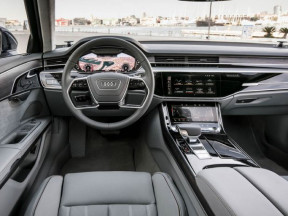
Yet, this digital dystopia is really quite wonderful. Take the dashboard of the 2019 Audi A8. It’s like some glorious technicolor binoculars are right there in front of you. Then there’s the 2018 Mercedes Benz S Class dash, with it’s near perfect blend of old world aesthetics and panavision style widescreen displays, like some kind of steampunk fantasy vehicle.
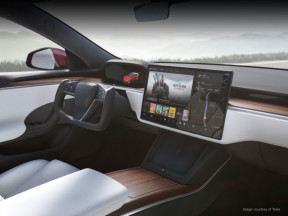
Yet the winner is the new kid on the block. Tesla has been redefining vehicles since they got started and the dashboard is no different. Sure, it looks like someone rotated a supersized iPad and then superglued that sucker to the middle of the dash. Yet it’s oddly pretty. It has a cool space age feel to it. And it’s the nerve system of your new connected life on the road.
The future of in-car digital displays
There’s a few reasons to get really excited about that weird looking Tesla dashboard. Now, admittedly you might not think it a good idea for your car to be able to stream all your favourite binge worthy shows from Netflix. But parking up at the rugby field on a freezing cold day whilst waiting for the kids to play…and a few episodes in the warmth haven of your Tesla might be ok. And in case you were wondering…no, you can’t stream and drive at the same time.
Other stuff planned for the future is arguably more useful. Like the see-through bonnet from Land Rover. It uses cameras and a heads up display to deliver an augmented reality experience for the driver, allowing them to see the terrain under the bonnet and placement/direction of the wheels. It could be a real plus for off-road adventures, although a little gross when you ride over a possum.
THE TECHNOLOGY BEHIND THE TRANSPARENT BONNET
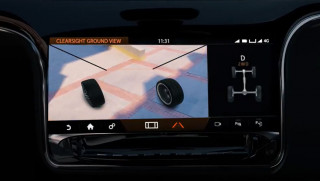
Then there’s the Corvette Stingray. You can record your drive as the computer shows lap times and the G force you pull around corners. Which sounds kind of dangerous if you only ever use your Stingray on the road and we imagine there'll be some funny looks when you get to work and state ‘made it in record time this morning - come watch the playback’.
These are both vehicle specific examples though. What about the tech adopted for the masses that will become standard? Well…it looks like it might well depend on how much you want to spend. And some manufacturers are betting you might want to spend big. For example, if Ford can get $10 per month in subscription fees for every Ford on the road then they’ll triple the value of the company. But what do you get? No-one really knows at the moment. Maybe you’ll pay extra for an automated reversing system or back up the boat app. Maybe you’ll stump up a few $ for ambient lighting and the latest digital update to your instrument binnacle so you can have the ‘batmobile’ theme display.
DASHBOARDS OF TOMORROW
There could be some benefits for emergency situations which could/should be free. Say you’re driving in the outback somewhere on holiday in Australia when a bushfire takes hold. A government warning plays automatically through your stereo and the in-car navigation loads up the safest route away from danger. That could be handy.
Then there is a digital voice assistant. “Hi Alexa - can you please let me know if there’s a McDonalds within 2 kms of my drive today. Just in case I need to refuel with a burger”. Yup - we could get behind that.
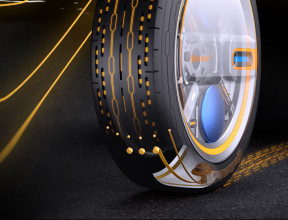
Tomorrow's Tyre Tech. Available Today.
Continental's innovations will make the future safer for drivers. And that future is arriving.
More tips and articles
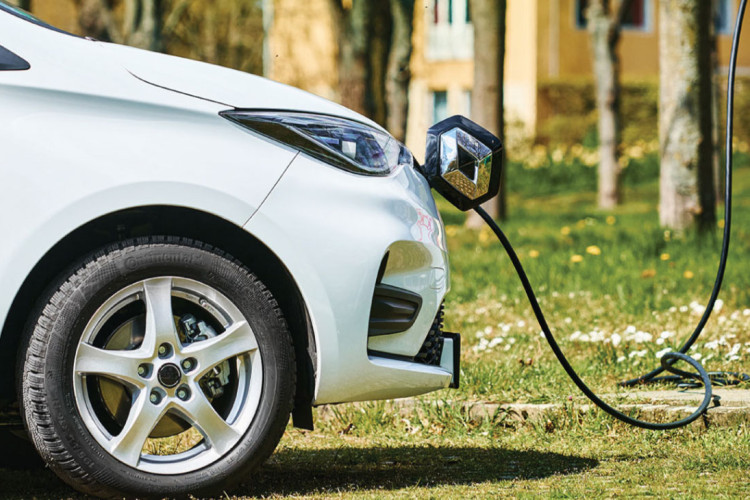
Tyres for Electric Vehicles
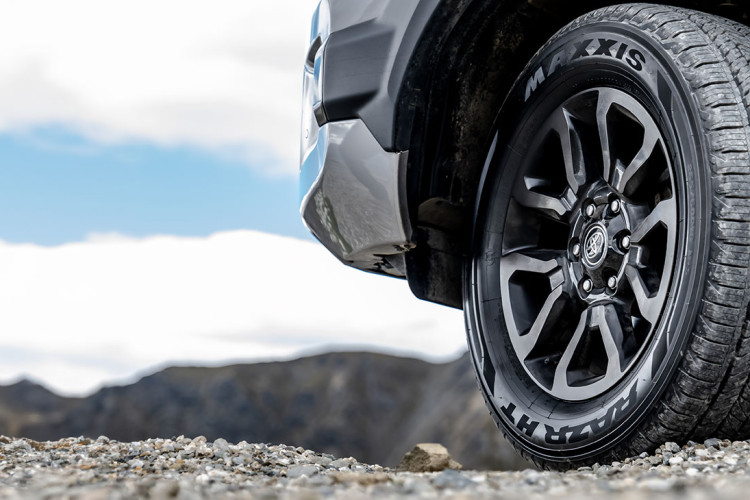
Product Spotlight:
Maxxis HT780 RAZR HT
